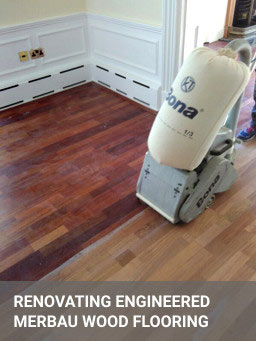Back to Floor Sanding
Engineered Flooring and Sanding: A Comprehensive Guide
Floor sanding is a professional restoration service specifically designed for real wood floors. This process effectively removes scratches, light indentations, surface stains, and old, worn sealants, helping to restore the natural beauty and lustre of the wood. In addition to improving the appearance of the flooring, sanding can also enhance the longevity of the wood by allowing for the application of fresh finishes that protect against wear and tear.
The Advantages of an Engineered Floor
Engineered flooring offers several unique advantages over solid hardwood. One of the most notable benefits is its increased resistance to moisture and humidity, making it an ideal choice for areas prone to fluctuations in moisture levels. Engineered wood typically comes with a durability warranty ranging from 10 to 30 years, whereas pre-finished solid hardwood may have warranties of around 50 years. Despite this, engineered floors tend to be more cost-effective and can be installed in environments where solid hardwood is less suitable, such as bathrooms, kitchens, and basements.
The unique construction of engineered flooring enhances its dimensional stability, significantly reducing the likelihood of warping or buckling compared to solid wood. This stability is primarily due to the multiple layers of plywood or high-density fiberboard (HDF) that make up the core of engineered planks, allowing for better performance in varying humidity levels.
However, it's important to note that engineered wood does have its limitations. While it is more resistant to moisture, it cannot withstand excessive moisture on its own. Proper subfloor conditions, suitable underlayment, and regular maintenance are essential to protect engineered flooring from humidity-related issues. Attention to humidity levels and the use of a dehumidifier in particularly damp areas can further enhance the longevity and performance of engineered wood floors.
Engineered Floors and Sanding

Unfortunately, engineered wood flooring cannot be renovated as frequently as solid hardwood flooring through the sanding and refinishing process. The structure of engineered flooring is both its greatest strength and its biggest limitation. It consists of multiple layers, with a plywood core topped by a thin wood veneer. The thickness of this "real" wood veneer typically ranges from 2 mm to 6 mm, which makes engineered wood floor sanding a delicate task. Sanding too little may not yield any noticeable improvement while sanding too much can damage the floor irreparably. Therefore, it's essential to consider these factors before attempting a DIY restoration.
Professional floor sanding is highly recommended for engineered flooring, especially those with a thinner top layer or if the floor is warped or uneven. Attempting to sand such surfaces without adequate experience can lead to disastrous results.
- Planks with top layers of 2-3 mm can be sanded only once.
- Planks with top layers of 4 mm can be sanded twice.
- Planks with top layers of 5-6 mm can be sanded up to 4 times.
If the top layers become too thin or if there is significant variation in thickness across the floor, patches of uneven sheen or colour may appear after applying the finish. This unevenness occurs because certain areas may no longer be able to absorb the finish as effectively as others, leading to a less uniform appearance.
Advice for Oiled Engineered Floors
When it comes to maintaining oiled engineered floors, regularly buffing and re-coating is highly recommended. One of the significant benefits of an oiled finish is its ability to allow for multiple re-coatings, as long as the floors are not excessively worn or damaged. This means that spot repairs can be easily executed without the need to sand the entire surface, helping to maintain a consistent appearance with minimal effort.
However, it's important to note that engineered floors with an oiled finish are relatively rare. Oils typically do not offer the same level of durability as lacquers, which are significantly tougher and more resistant to wear. As a result, the vast majority of engineered wood flooring is finished with a pre-finished varnish, which provides superior protection. This factory-applied coating is resilient, difficult to penetrate, and offers a longevity that surpasses most on-site applications, often lasting many years when properly maintained.
Engineered wood flooring is best suited for areas with light moisture, particularly in homes where occupants value natural materials. While the options for sanding this type of flooring are somewhat limited, it remains feasible for those with the necessary skills and experience. If you feel uncertain about the process, professional assistance is available to ensure a successful restoration while preserving the integrity of your floors.
Waterproof Engineered Wood Flooring
In recent years, advancements in flooring technology have led to the development of waterproof options for engineered flooring, making it an increasingly popular choice for homeowners. These innovative products are designed with specially treated surfaces and robust core layers that resist moisture penetration, allowing them to withstand spills, humidity, and even occasional flooding without warping or damage. This waterproof capability makes engineered flooring suitable for high-moisture areas such as bathrooms, kitchens, and basements, where traditional wood floors might not perform well. With a variety of styles and finishes available, homeowners can enjoy the beauty of wood aesthetics without compromising on durability and functionality, ensuring that their floors maintain their appearance and integrity for years to come.